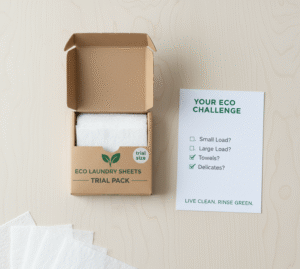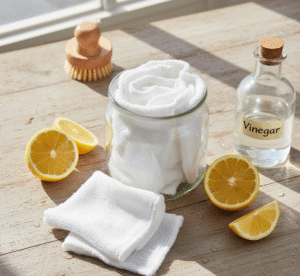The Unboxing: What’s Sheet Vinyl Made Of?
Let’s get real. Before we talk about the sustainability of sheet vinyl floorings, we need to know what they’re made of. It’s not just a sheet of plastic you unroll and forget. It’s mostly PVC : a type of plastic that lasts forever (in a bad way). No surprise there.
But there’s more: plasticizers. These make the floor flexible. Some plasticizers are safer now than before, but older ones? Risky stuff. Not the kind of thing you’ve wanted under your feet for years.

Recycled Content: Fact or Fiction?
You’ve probably heard the pitch :“made with recycled material.” But here’s the twist. Most of that recycling? It’s just factory scraps, never even used. The sustainability of sheet vinyl floorings often stops at the marketing brochure. True post-consumer recycling? Rare.
Life Cycle Lowdown: Footprints from Factory to Floor
Manufacturing Matters: Energy and Emissions
Vinyl is cheap on the wallet, and expensive on the planet. To make it, you need heat, pressure, and chemicals : a lot of them. And the result? Heavy emissions. The sustainability takes a hit right at the start.
Some factories are getting cleaner. Not enough. Not fast.

Installation Impact: Adhesives and VOCs
Even when the flooring reaches your home, the story continues. Installing vinyl often involves adhesives that emit VOCs : volatile organic compounds. You don’t see them, but you inhale them. Not great for health. Some types skip the glue, but not all. Another dent in the sustainability of our sheet vinyl floorings.
The Long Haul: Durability and Detox
Built to Last? Extending Its Lifespan
Here’s a win. Vinyl can last for decades if you treat it well. That’s good for sustainability. The sustainability improves the longer you keep them out of landfills. Short use cycles? Wasteful. Long life? Less damage.
Indoor Air Quality: What’s Breathing Beneath Your Feet?
There’s another side: chemical emissions over time. Some vinyl releases low levels of VOCs even years later. Older floors may contain phthalates, too. Sustainability includes your home’s air quality. What you breathe matters.

End of the Line: Disposal and The Future
Landfill or Loop? Recycling Challenges and Solutions
When vinyl dies, it doesn’t vanish. Recycling is difficult. Too many mixed materials. Most vinyl ends up in landfills, where it sticks around… forever. That’s a big flaw in the sustainability of these. Loop closed? Not yet.
The “Next Gen” Vinyl: Greener Innovations on the Horizon?
There’s movement. Bio-based vinyl. Lower-emission production. Some brands are trying to fix the loop. These next-gen options could improve sustainability, but they’re not mainstream yet. Early adopters take note.
Your Eco-Choice: Making an Informed Decision
Certification Check: What to Look For
If you’re buying vinyl, look for certifications. FloorScore. Greenguard. “Phthalate-free.” These help you spot better options, though they don’t solve everything. Still, they’re one step toward more responsible flooring choices.
Beyond Vinyl: Other Sustainable Flooring Alternatives

You don’t have to choose vinyl at all. Linoleum, bamboo, cork, and reclaimed wood: offer beauty and sustainability. Sometimes, the best way to improve the sustainability of sheet vinyl floorings… is to skip them entirely.
The Bottom Line: So, Is It Green Enough?
Quick Takeaway: Our Final Verdict
Here’s the deal. Vinyl flooring is cheap, durable, and everywhere. But the sustainability of sheet vinyl floorings? Still in question. Some improvements are happening. You can buy smarter, keep it longer, and avoid the worst.
But is it truly green?
Not yet.





